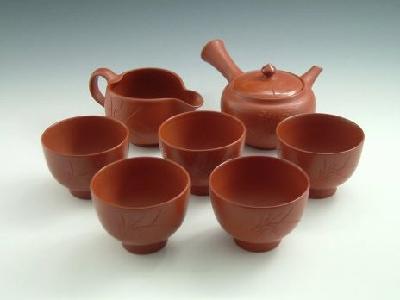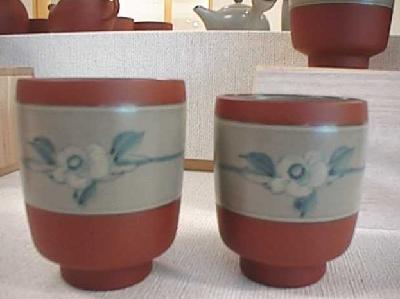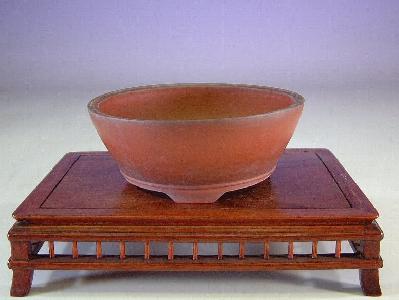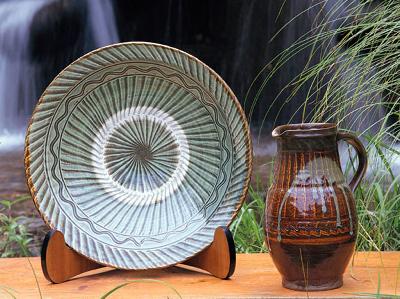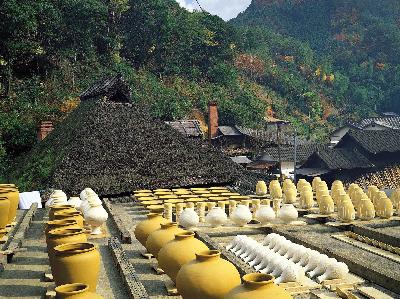|
Mumyoi ware is a type of pottery made of mumyoi clay, which contains ferrous oxide and is obtained near the ancient goldmine on Sado Island in Niigata Prefecture. Originally, mumyoi was used for medical purposes such as relieving symptoms of palsy, digestive problems, burns, and helping to stop bleeding.
The pottery was first produced in 1819, when they were fired at relatively low temperature. The large-scale production adopting high-temperature firing was started in 1857. Unlike other clay wares, Mumyoi ware requires extra processing efforts such as raw-polish, a process that polishes the products with cotton cloth before firing, and a process of polishing with sand after firing.
As Mumyoi pottery is fired in a kiln at a high temperature, it becomes exceptionally hard. It is well-known that Mumyoi ware produces a clear metallic sound when tapped. The more it is used, the glossier it becomes. Mumyoi ware is more suitable for daily use rather than for decorative purposes.
The pottery was first produced in 1819, when they were fired at relatively low temperature. The large-scale production adopting high-temperature firing was started in 1857. Unlike other clay wares, Mumyoi ware requires extra processing efforts such as raw-polish, a process that polishes the products with cotton cloth before firing, and a process of polishing with sand after firing.
As Mumyoi pottery is fired in a kiln at a high temperature, it becomes exceptionally hard. It is well-known that Mumyoi ware produces a clear metallic sound when tapped. The more it is used, the glossier it becomes. Mumyoi ware is more suitable for daily use rather than for decorative purposes.
| [+ADDRESS] | 
|

